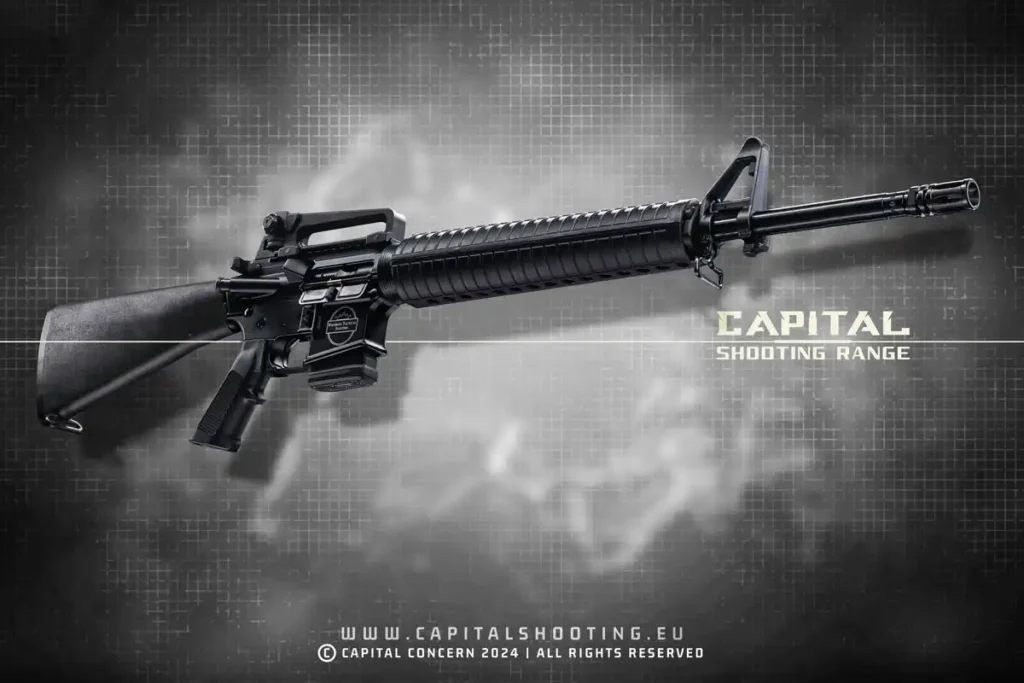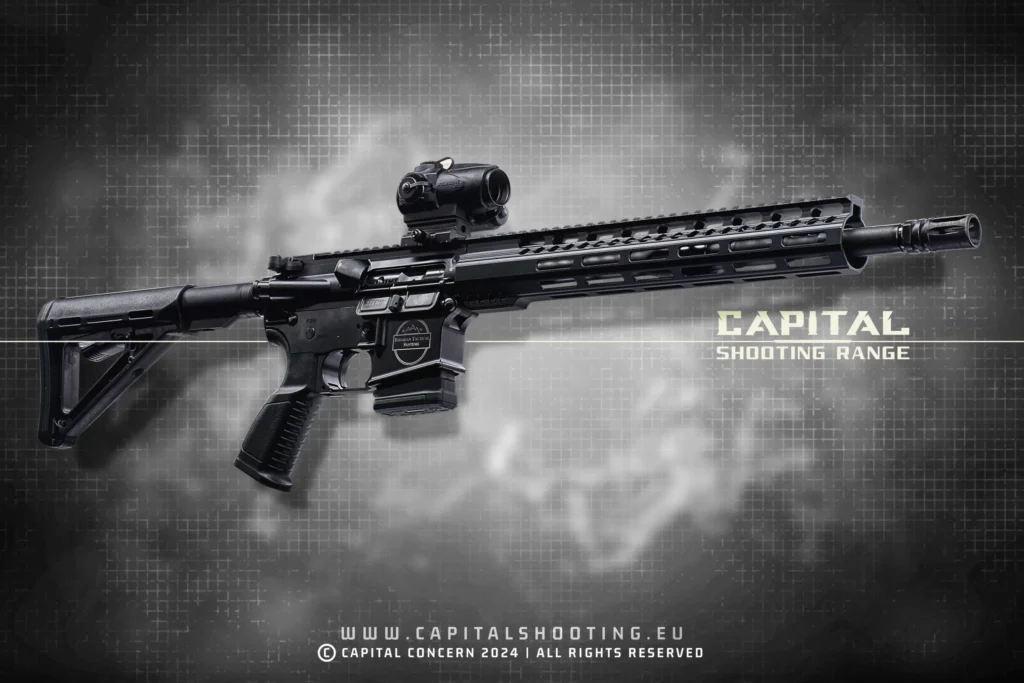Introduction to the M16 rifle
The M16 rifle is one of the most significant innovations in the history of modern warfare. Known for its reliability, versatility, and effectiveness, the M16 has become the most widespread 5.56mm caliber firearm globally, with over 8 million units deployed to soldiers across six continents. This iconic rifle, with its air-cooled, gas-operated, and magazine-fed design, stands alongside legendary weapons like the samurai sword and John Rambo’s M-60.
Historical background
The M16 was first introduced in the 1960s, during the Vietnam War. Initially adopted by the U.S. Army Special Forces, it replaced older, heavier combat rifles made of wood and steel, such as the M14. The M16’s lightweight design and use of advanced materials made it a revolutionary weapon, although it faced skepticism and criticism from soldiers accustomed to traditional rifles.
The original M16 encountered challenges, particularly in the harsh jungle environments of Vietnam. Concerns over its durability and reliability led to numerous modifications and improvements. Despite these early hurdles, the M16 quickly became recognized as a superior standard service weapon, ultimately surpassing its competitor, the AK-47, in terms of reliability on the modern battlefield.
Design and features
The M16 is instantly recognizable due to its distinct design features. It has a 20-inch barrel, a combination of pioneering plastic and metal components, and a characteristic A-frame front sight. The rifle’s air-cooled, gas-operated system allows for rapid fire, making it effective in various combat situations. The M16’s selective fire capability enables users to switch between semi-automatic and automatic firing modes, providing flexibility depending on the combat scenario.
Evolution and variants
The M16 has undergone significant evolution over the decades, resulting in various models that have addressed different operational needs and improved upon the original design.
M16A1
The M16A1 was introduced to address the problems encountered with the original M16 design. This version included modifications such as a chromed chamber to reduce corrosion and jamming, a forward assist to ensure the bolt was fully closed, and a flash suppressor to reduce visibility when firing. By 1967, the M16A1 was widely used by American troops in Vietnam, marking its transition into a reliable combat weapon.
M16A2
In response to feedback from the U.S. Marine Corps, the M16A2 was developed with further improvements. Introduced in the late 1970s, this model featured a thicker, heavier barrel to address overheating issues. The M16A2 also had a new flash suppressor designed to minimize the dust signature when firing from prone positions, and a burst fire mode replacing the full-auto option to conserve ammunition and increase accuracy.
M16A3
The M16A3, a modified version of the M16A2, was adopted in limited numbers by the U.S. Navy SEAL units and security forces. This variant retained the full-auto fire capability, which the M16A2 had replaced with a burst mode. The M16A3 shared the same external features as the A2 but included internal changes to support fully automatic firing. It became a popular choice among certain specialized military units.
M16A4
The M16A4 represents the latest evolution in the M16 family. Introduced in the 1990s, this variant includes a Picatinny rail system on the upper receiver, allowing for the attachment of various optics, scopes, and accessories. The M16A4 also features improved ergonomics and modularity, making it adaptable to different combat situations and individual soldier preferences. It remains in service with various branches of the U.S. military and allied forces worldwide.
Modern Warfare
The M16 has played a vital role in numerous military conflicts since its inception. From the jungles of Vietnam to the deserts of the Middle East, the M16 has proven its reliability and effectiveness in diverse combat environments. Its continued use by over 15 NATO countries and numerous other nations underscores its status as a mainstay in modern military arsenals. The M16’s success can be attributed to its adaptability, allowing it to meet the ever-evolving demands of warfare.
Compared to other rifles, such as the AK-47, the M16 offers greater accuracy and a lighter weight, making it a preferred choice for many military forces. Its precision and modularity have ensured its relevance, even as newer models and technologies emerge.
Impact and legacy
The M16 has had a profound impact on the development of modern rifles. Its innovative design set a new standard for firearms, influencing the creation of many subsequent rifles. The M16’s use of lightweight materials, ergonomic features, and selective fire capabilities were groundbreaking at the time and continue to be relevant in contemporary firearm design.
Despite the introduction of the M4 Carbine, a shorter and more compact version of the M16, the M16 remains in widespread use due to its accuracy, reliability, and familiarity among soldiers. The rifle’s legacy is evident in its continued deployment and the respect it commands among military personnel and firearm enthusiasts alike.
Conclusion
The M16 rifle has cemented its place as one of the most iconic and effective firearms in military history. From its early days in Vietnam to its current use around the world, the M16 has consistently demonstrated its value on the battlefield. As technology continues to evolve, the M16’s adaptability and proven performance ensure that it will remain a crucial part of modern warfare for years to come.
Frequently Asked Questions
What is the difference between the M16 and M4 Carbine?
- The M4 Carbine is essentially a shorter, lighter version of the M16. It has a collapsible stock and a shorter barrel, making it more suitable for close-quarters combat. While both firearms use the same 5.56mm ammunition and share similar internal mechanisms, the M4 is more compact and versatile for modern military operations.
Why did the military transition from the M14 to the M16?
- The M16 replaced the M14 due to its lighter weight, increased ammunition capacity, and ease of use. The M16’s design allowed soldiers to carry more ammunition and engage targets more effectively, especially in the dense jungle environments of Vietnam. Its modularity and selective fire capabilities made it a more versatile weapon for various combat scenarios.
What are the main advantages of the M16 over the AK-47?
- The M16 offers several advantages over the AK-47, including greater accuracy, lighter weight, and better ergonomics. The M16’s design allows for more precise shooting, particularly at longer ranges. Its compatibility with various attachments and accessories, due to the Picatinny rail system, makes it more adaptable to different combat situations.
Is the M16 still used by the U.S. military?
- Yes, the M16 is still in use by various branches of the U.S. military, primarily in training and non-frontline roles. The M4 Carbine, a derivative of the M16, has become more prevalent in frontline combat due to its compact size and versatility. However, the M16 remains a trusted and reliable rifle in many military arsenals.










